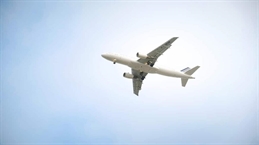
The International Air Transport Association (IATA), in collaboration with Worley Consulting, has released a study confirming that the global supply of sustainable aviation fuel (SAF) feedstock is sufficient to support the airline industry's goal of reaching net-zero carbon emissions by 2050.
The analysis found that all feedstocks considered meet strict sustainability standards and do not trigger land-use changes, shifting the focus from feedstock availability to the pace of SAF technology deployment as the primary barrier to scaling production.
"The study identified significant barriers in using that feedstock for SAF production, namely: The slow pace of technology rollout that would enable SAF to be produced from varied sources ... [and] competition with other potential users of the same feedstock," IATA said.
It noted that currently, the only commercially scaled SAF production facilities use HEFA technology, for example, converting used cooking oil into SAF.
Related to competition for biomass feedstock, IATA said that policies allocating biomass feedstock to hard-to-abate sectors, such as aviation, must be prioritized.
Airlines will need 500 million tonnes (Mt) of SAF to achieve net-zero carbon emissions by 2050, as outlined in the IATA Net Zero Roadmaps.
IATA stated that this can be achieved from two main sources: biomass, which has the potential to produce more than 300 million tons of bio-SAF annually by 2050. Some of this potential could be limited by the use of competing sources. This potential could be expanded by unlocking additional feedstocks or through efficiency gains and technology improvements over intervening decades.
It could also be sourced from power-to-liquid (PtL), which will be required to reach 500 Mt of SAF production annually by 2050. Maximizing the volumes of cost-effective bio-SAF will reduce the pressure on e-SAF to bridge the gap.
In all cases, IATA emphasized that to maximize SAF output, it will be essential to improve conversion efficiencies, accelerate the rollout of technology, enhance feedstock logistics, and invest in better infrastructure required to scale up commercial facilities across all regions.
"We now have unequivocal evidence that if SAF production is prioritized, then feedstock availability is not a barrier in the industry's path to decarbonization. There is enough potential feedstock from sustainable sources to reach net-zero carbon emissions in 2050. However, this will only be accomplished with a major acceleration of the SAF industry's growth," said Willie Walsh, director-general of IATA. "We need shovels in the ground now."
The report noted that the main challenges are enhancing the feedstock supply chain infrastructure, scaling up novel sources that meet sustainability criteria, and ensuring that the feedstocks identified for SAF production are made available to the air transport industry.
Accelerating the rollout of technology to unlock new SAF production technologies, especially PtL, including reliable access to low-cost renewable electricity, hydrogen, and carbon capture infrastructure, which are all required as part of the PtL production method, also remains a challenge so is achieving coordinated government policies to support innovation, and investment to create a fully functioning SAF market.
IATA is calling for stronger regional coordination, identifying North America, Brazil, Europe, India, China, and ASEAN as critical to scaling global sustainable aviation fuel (SAF) production.
"Activating the energy industry to invest in SAF production capacity, support technology commercialization, and align their business strategies with global decarbonization goals," said Marie Owens Thomsen, senior vice president of sustainability and chief economist at IATA.
"Governments, energy producers, investors, and the aviation sector must work together, de-risk investment, and accelerate rollout. Policy certainty and cross-sector collaboration are essential to unlock the scale we need. The time to act is now. Delays will only make the challenge harder," she added.
"With this study, it becomes clear that we can make SAF the solution it needs to be for aviation's decarbonization," Walsh commented. "The potential to turn SAF feedstock into real SAF production is in the hands of policymakers and business leaders, particularly in the energy sector. The conclusion of this study is an urgent call to action."
"We have just 25 years to turn this proven potential into reality," the IATA chief added.



